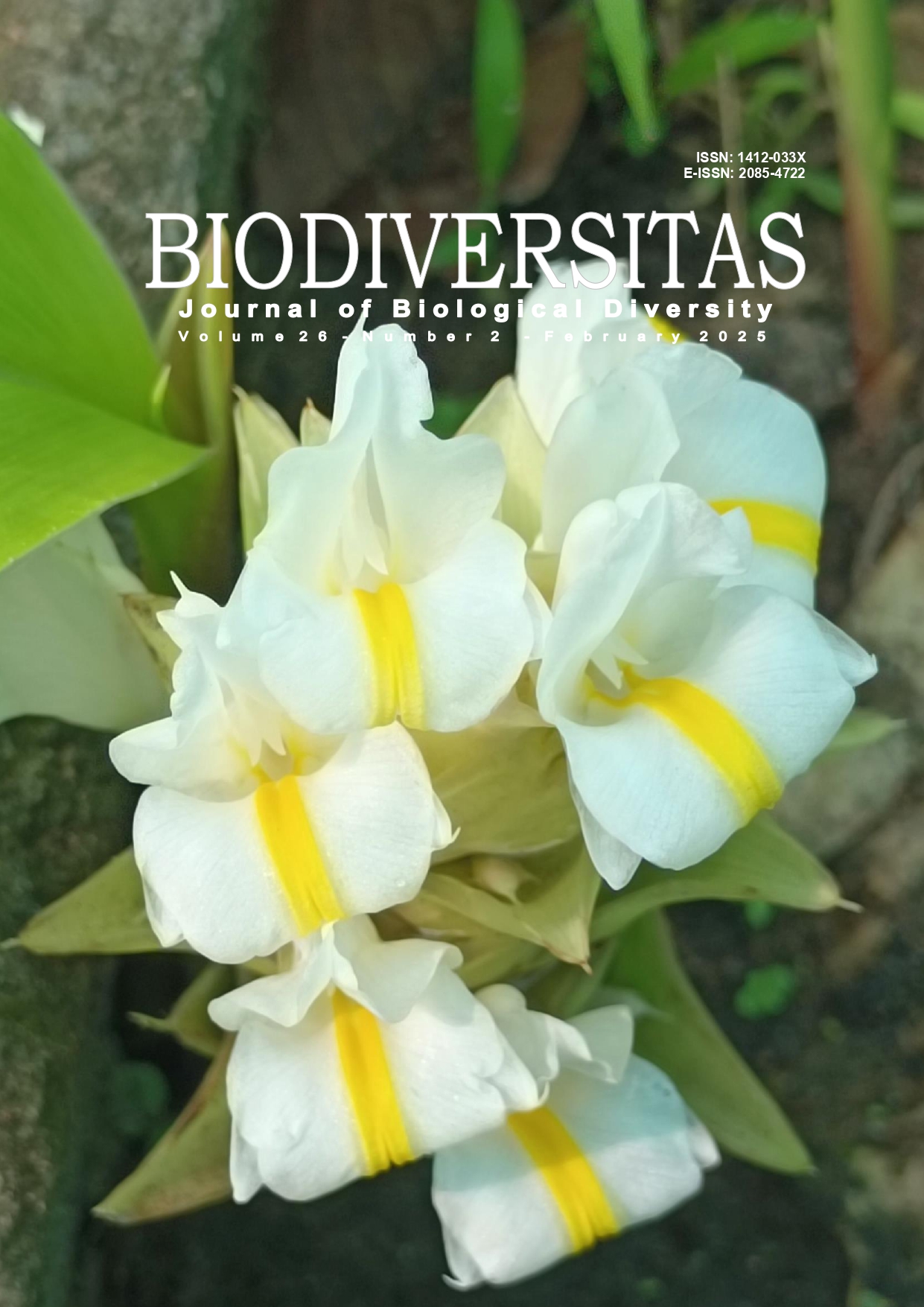Isolation and characterization of fluorescent Pseudomonas endophyte from lowland creeping-sensitive plant, and its effect on several plant pathogens and plant growth
##plugins.themes.bootstrap3.article.main##
Abstract
Abstract. Soesanto L, Azkiyah A, Primayuri D, Sundari D, Mugiastuti E. 2025. Isolation and characterization of fluorescent Pseudomonas endophyte from lowland creeping-sensitive plant, and its effect on several plant pathogens and plant growth. Biodiversitas 26: 723-730. Despite declining effectiveness and the risk of pathogen resistance, farmers still prefer synthetic fungicides to control plant disease. A safe alternative to synthetic fungicides is toxins produced by biocontrol agents. This research aimed to isolate the endophytic bacteria, fluorescent Pseudomonas, from lowland creeping-sensitive plants (Mimosa sp.), analyze its morphological and biochemical characteristics, and assess its impact on pathogens and plant growth promoters. The experiment was conducted at the Plant Protection Laboratory, Faculty of Agriculture, Jenderal Soedirman University, from June to September 2024. Samples of creeping-sensitive plant roots were collected from several marginal soils in the lowlands of Banyumas and Cilacap Regencies. The result showed that a total of 15 isolates of endophytic fluorescent Pseudomonas were isolated from the samples. It was also noted that 80% of fluorescent Pseudomonas isolates were able to inhibit the growth of several plant pathogens. Fluorescent Pseudomonas isolates demonstrate significant variability in their ability to inhibit pathogenic fungi and bacteria, with PE13 and PE14 showing the most effective inhibition and enzyme production capabilities and several isolates had a positive effect on plant growth parameters. Fluorescent Pseudomonas exhibited both abilities through the production of several hydrolysis enzymes (lipase, cellulase, protease, and chitinase), HCN, siderophores, and phosphate solubilizing compounds.
##plugins.themes.bootstrap3.article.details##
Most read articles by the same author(s)
- LOEKAS SOESANTO, DHIMAS AULI SAPUTRA, MURTI WISNU RAGIL SASTYAWAN, ENDANG MUGIASTUTI, AGUS SUPRAPTO, RUTH FETI RAHAYUNIATI, Secondary metabolites of the granular form of Pseudomonas fluorescens P60 and its applications to control tomato bacterial wilt , Biodiversitas Journal of Biological Diversity: Vol. 24 No. 4 (2023)
- RUTH FETI RAHAYUNIATI, RULY EKO KUSUMA KURNIAWAN, ENDANG MUGIASTUTI, Distribution of banana Fusarium wilt in Banyumas, Indonesia, and characterization of F. oxysporum isolates from infected bananas and taro growing on the same farm , Biodiversitas Journal of Biological Diversity: Vol. 25 No. 4 (2024)
- WITIYASTI IMANINGSIH, NURAENI EKOWATI, SALAMIAH, NUNIEK INA RATNANINGTYAS, LOEKAS SOESANTO, Isolation of endophytic fungi from Hiyung chili peppers of local South Kalimantan (Indonesia) varieties and in vitro tolerance to acidic environment , Biodiversitas Journal of Biological Diversity: Vol. 24 No. 7 (2023)

